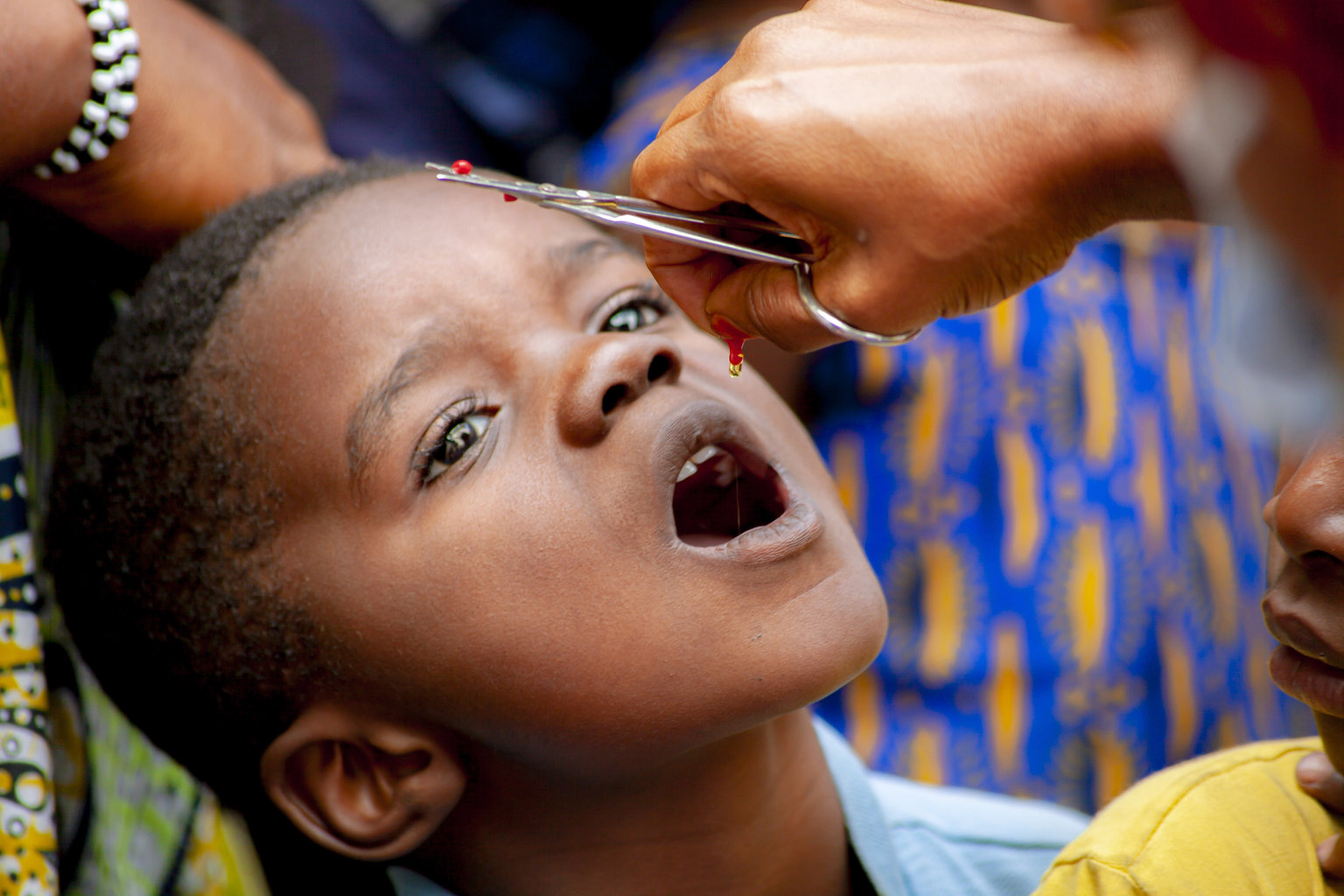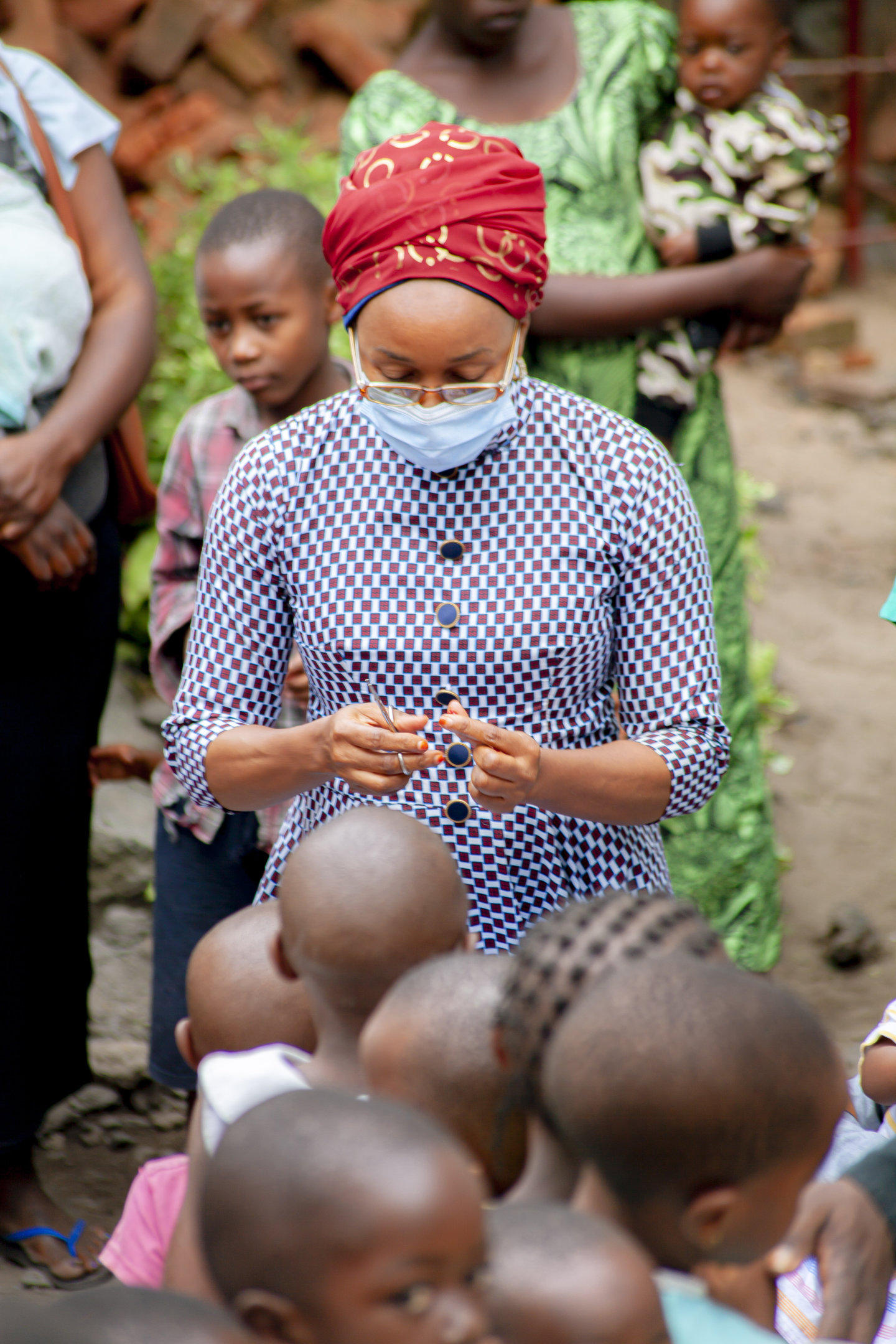Blog Posts
Better together: The power of vitamin A and vaccines for child survival
April 28, 2023
Vitamin A supplementation saves lives and is an entry point for strengthening health systems
We know vitamin A supplementation for children under five boosts immunity and reduces rates of childhood morbidity—but the program itself presents its own opportunity, an entry point for building capacity and improving availability of other key nutritional services. Our Deputy Director of Africa looks at what that means in the context of the Democratic Republic of Congo.
Posted on June 15, 2022
I was recently in Kinshasa, the capital of the Democratic Republic of Congo (DRC), attending a workshop on vitamin A supplementation (VAS). The workshop brought together government officials, Nutrition International, and other Global Alliance for Vitamin A (GAVA) partners to discuss how to increase and sustain high coverage of VAS – a cornerstone of child survival interventions.
In DRC, the mortality rate for children under five is estimated at 81 per 1,000 live births. Recent data on vitamin A deficiency is lacking, but a 1998 study conducted by the National Nutrition Program reported that 61% of children under three were affected. Meaning this is a high need, high burden country.
But delivering health and nutrition services in the DRC can be challenging. The country boasts a large land mass with great cultural and geographical diversity, making some areas more difficult to access, and areas of conflict which require thoughtful navigation. Twenty-six different Provincial Health Directorates operate separate health jurisdictions, leading to disparate policies and implementation.
While the challenges of infrastructure and logistics are great, so too is the opportunity.

During the workshop we discussed moving more intentionally from vitamin A delivered through campaigns to delivery through routine health services. Both methods have merit, but while campaigns mobilize a lot of people, they also require extensive resources while under time constraints. However, without adequate systems in place that support the delivery of VAS through routine health services, children will miss critical doses. We can’t let that happen.
We have a chance to develop an integrated approach, which alleviates pressure on the whole system. Ultimately, VAS is an entry point to increase childhood survival, by strengthening health services and key child survival programs, which include access and utilization of other services, nutrition education, growth monitoring and promotion, and deworming.

“There is a lot of work to do, but we are together in our commitment.
— Banda Ndiaye, Nutrition International’s Deputy Regional Director in Africa
We can do this by taking a health systems strengthening approach, including at the community level with the aim of reaching children and offering integrated child health and nutrition services such as growth monitoring and promotion, active screening for acute malnutrition, monitoring the use of mosquito nets, seasonal malaria chemoprevention and to integrate VAS service delivery into primary healthcare services, mentoring providers with hands-on technical training, and optimizing platforms, resources, and time management.
With this approach, our shared goal of consistently reaching at least 80% of eligible children with two doses of vitamin A every year is possible. If we have strong VAS programs and coverage is high, we can reduce up to 12% of all causes of child death globally. Parents should know about that. Decision-makers should know about that. VAS is cost-effective, efficient and it saves lives. Vitamin A deficiency weakens the immune system and the health of communities. Addressing VAS is part of a comprehensive pandemic response. It should be on top of the public health agenda for sub-Saharan Africa.

For me, there is no greater motivation than contributing to saving the lives of children. While I joined the team in 2006, I have been working in public health and nutrition programming for more than two decades. Like me, many of my colleagues at Nutrition International are technical experts and leaders in their field. I know the team will draw on its vast experience working with national and provincial governments to address the acute needs of micronutrient deficiency while building capacity and creating better synergy in local health systems.
I returned home from the DRC workshop with the uplifting knowledge that VAS is top of mind for the Ministry of Health in DRC, Nutrition International and GAVA partners. There is a lot of work to do, but we are together in our commitment.